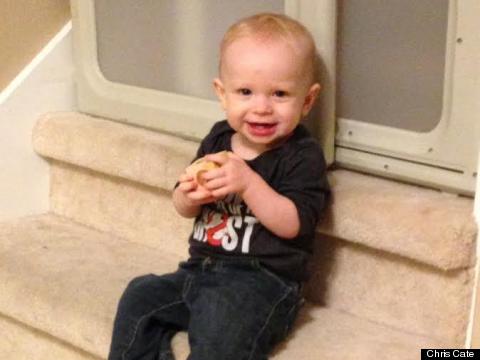Nearly everyone is familiar with the term "freshman 15," as in the 15 pounds freshmen commonly gain in college. But there is no clever term for the weight parents often gain during parenthood, probably because nobody wants to know the number.
Parenting weight should be called the "parenting pound," as in the parenting #, the nerdy twin of the hashtag also recognized as the number sign. The name works because it meets the two criteria parents need in the name: to avoid knowing the precise number of pounds parenthood adds and to reinforce the fantasy that maybe it's only a pound.
Babies and toddlers are obviously the only ones to blame for the parenting pound. (Don't judge me. I obviously don't.) Children drive you to eat at strange hours, monopolize your scheduled exercise times and are daily reminders of how chubby can be a very adorable look. But babies and toddlers are also the antidote to your weight gain. They are the toughest personal trainers your money can (does) buy who prevent you from eating what you want, force you to burn calories against your will and show you how easy it is to grow out of your clothes.
For your physical and mental health, it's always best to associate your children as the antidote to weight gain and not the reason. So with that in mind, consider this 5-step five step plan babies and toddlers use to help you lose the parenting pound, or at least keep it down to a pound:
Step 1: Attempt to put your baby or toddler to sleep.
Step 2: Walk down the first five steps of your staircase.
Step 3: Quickly walk back up the same five steps you just walked down after hearing your baby/toddler cry.
Step 4: Attempt to put your baby/toddler to sleep again, walk back down five steps, shake your head, exhale and proceed to walk back up the same five steps again after hearing your baby throw his or her pacifier or your toddler demand another story.
- More milk
Following this simple five step plan can help improve a parent's shape from a soft orange to a svelte pear. It also works without actual steps if your child demands you walk back and forth fast enough to impress a basketball coach. But if these simple steps aren't easy or unavoidable enough, you might want to try these other exercise routines babies and toddlers love to order you to do:
Sit and Reach: Sit down on the carpet and reach for a toy under the couch.
Push Ups: When you are unable to reach the toy under the couch by sitting down, proceed to lie down on your belly and grab the "lost" toy, then push up. Repeat as many times as there are toys that have rolled or been placed under the couch.
Pull Ups: Lift the baby/toddler attached to your leg and pull him or her up for a kiss. Repeat. The degree of difficulty increases based on the desire of your baby/toddler to not be put back down.
Squats: Squat down and let your baby/toddler jump on your back for a piggyback ride.
Run: Chase your baby or toddler. If your baby doesn't run yet, wait until he or she cries and run back to him or her because you are thought to be a very distant five feet away.

A previous version of this post originally appeared on www.parentnormal.com.